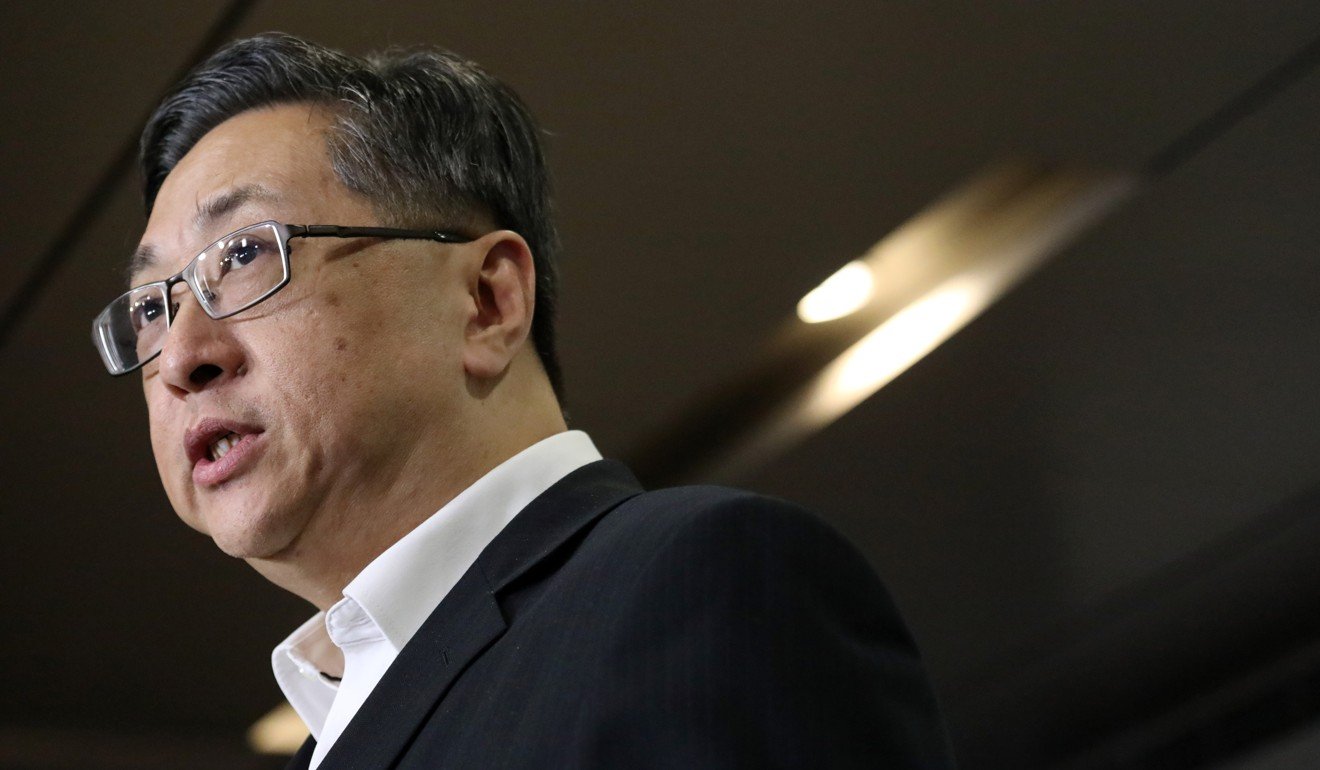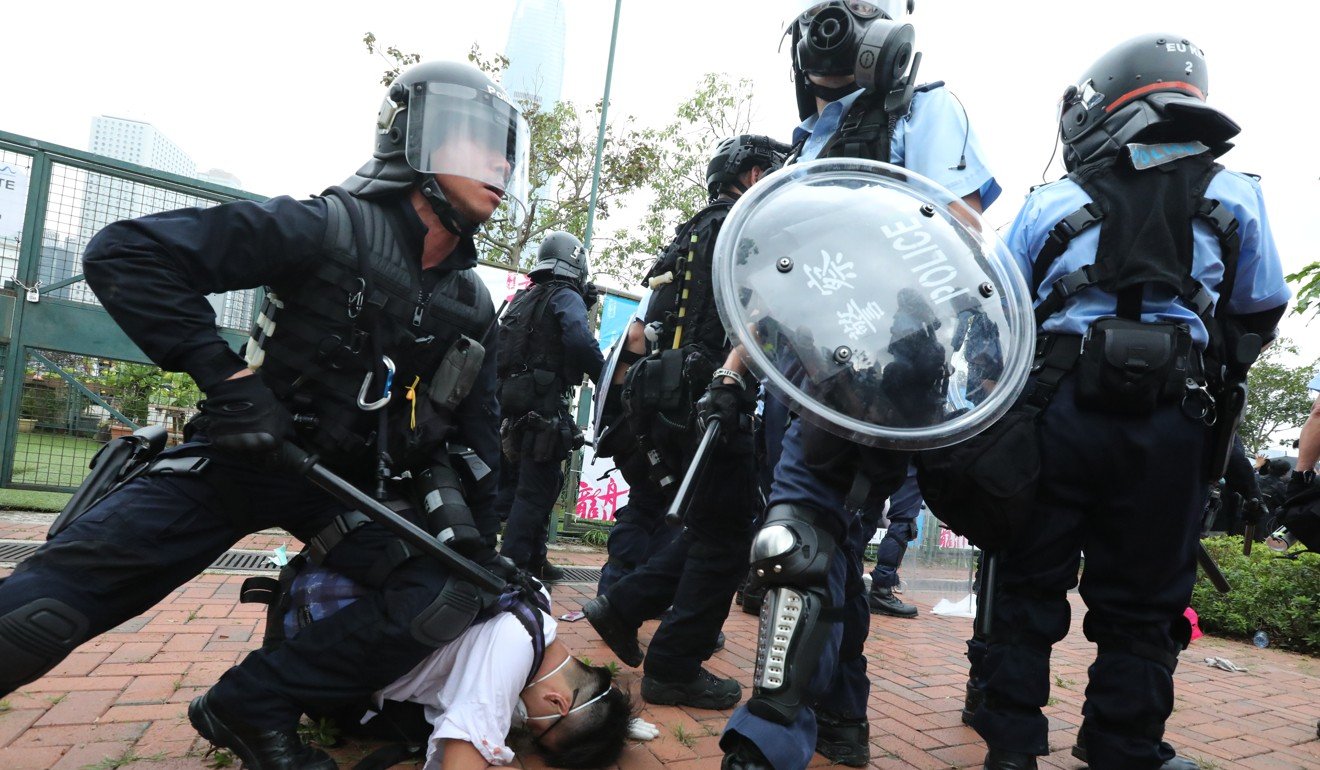
When is a riot not a riot? Carrie Lam’s latest attempt to pacify Hong Kong public does little to clear muddy waters
- Chief executive’s insistence that government has never described protesters as rioters raises more questions
- Legal experts say people caught up in violent clashes could be charged just for being there
The Hong Kong government’s latest attempt to play down the nature of the violent clashes between police and protesters triggered by the extradition bill has done little to end the debate over its categorisation as a riot, legal specialists and a political scientist said.
During her press conference on Tuesday, Chief Executive Carrie Lam Cheng Yuet-ngor reiterated her stance that the government did not regard peaceful protesters as rioters.
“It only refers to certain people’s behaviour over a particular period of time,” she said.
That approach, however, raised questions from legal experts as to whether the government’s intention was to pacify the public, while at the same time warning that those who had charged a police barrier in the worst of the clashes last Wednesday could still be accused of rioting.
Police classified the clashes outside the Legislative Council as a riot, during which they fired tear gas, rubber bullets, and beanbag rounds at demonstrators pushing towards defensive barriers. Around 80 people, including 22 officers, were injured in the unrest.

But, on Monday evening, police commissioner Stephen Lo Wai-chung said only those who had been involved in attacking frontline officers could be accused of rioting, and urged other protesters not to be concerned.
At least five out of the 32 protesters who were arrested, were taken on suspicion of rioting, and three of those were arrested at Queen Elizabeth Hospital, in Yau Ma Tei, while seeking treatment for injuries sustained during the protests. They were arrested after Lo said the clashes after 3.30pm on Wednesday amounted to a riot, a legal source told the Post earlier.
To avoid being caught by police, some protesters told doctors they were “walking by” Admiralty last Wednesday, but declined to reveal if the wounds were caused during the clashes.
Lawyer Daniel Wong Kwok-tung, who previously represented activists facing riot charges, accused the police chief of twisting and construing the offence too narrowly.
He said to be guilty of rioting under Hong Kong law, prosecutors had to prove the accused had taken part in an unlawful assembly, and they had committed “a breach of the peace”.
But, according to the law, if both conditions are met, “the assembly is a riot and the persons assembled are riotously assembled”. Any person convicted of rioting could face a maximum of 10 years in jail.
“Anyone within the same area of the clashes at the time it unfolded, should be worried of being charged for rioting,” Wong said. “Because by definition, a lone-wolf protester cannot assemble nor initiate a riot, he must receive the help of others.”
Good job, protesters: now could we reach a compromise, please?
While Lo said only those involved in violent acts could be rioting, criminal lawyer Lawrence Lok Ying-kam SC and scholar Simon Young of University of Hong Kong said those who had chanted slogans could also be accused.
“For those present at the time of clashes, they may be accused of lending support by their presence,” Lok said. “Lo made it sound like only those in a certain spot at the scene could be prosecuted.”
Lok said the police chief’s categorisation, later endorsed by the chief executive, had no bearing on future legal proceedings.
“It is for the court to decide whether the clash amounted to a riot,” he said.

But Young, and former deputy director of public prosecutions John Reading SC, said it was hard for the government to sue all protesters. Prosecutors for instance, have to prove clear intention of assisting in a rioting, or acts of violence, such as pushing towards police barriers.
“The mere presence is not enough to prove an offence of rioting,” Young said. “There must be an actual act of breach of peace, or clear acts of aiding or abetting the rioters. It would be very difficult [for the police] to prosecute all who are present at the time.”
Reading said those who had refused to leave after the police warning could be exposed to arrest, assuming the police’s direction was legitimate to keep the peace and safety of the public.
Yet, the prosecution would need to prove there was an actual “breach of peace”, such as clashing against police barrier. Those who had protested peacefully or blocked the roads are unlikely to be charged, he said.
To Beijing, Hong Kong’s extradition protests are sealing the city’s fate
Political scientist Ray Yep Kin-man of the City University said the government clearly wanted to make some concessions to pacify the public, but without making a complete U-turn, after millions of people took to the streets in two massive rallies.
“The government is trying to focus on several protesters, instead of pinpointing the entire protest,” Yep said, adding the several of Lam’s advisers had been trying to silence opposition for the past few days.
“From the backlash, the public feel strongly that the clashes should not be categorised as a riot, which is such a negative label, and was later endorsed by Carrie Lam,” he said.
“To most of the protesters, they may not really worry about any legal responsibility, but they were upset that they were labelled as rioters.”
But Yep cast doubt over the effectiveness of the government’s clarification.
“I feel that Lam was insisting she did nothing wrong, and that cancelled out any pacifying effect on the public.”
Speaking at a meeting of the Independent Police Complaints Council (IPCC), on Tuesday afternoon, the force’s director of management services Edwina Lau Chi-wai said commanders on the ground had decided what weapons to use based on the situation they faced.
Asked if only protesters at the front were rioters, Lau said: “The areas involved were large. Having three or more people assembling together in an disorderly manner is enough to be engaged in an unlawful assembly.
“But, regardless of the number of protesters that day, it could be a riot if one was violent.”
Anthony Neoh, the council’s chairman, said the law itself was clear and he would leave it to Lo to make the classification.
Hospital Authority denies leaking protesters’ data to police for arrests
Separately, Lau said the force’s Complaints Against Police Office would set up a special team to look into the 61 complaints received so far. Officers handling the complaints would not have been involved in the protests.
“Each interview with the complainant or a search for evidence will be accompanied by a member or observer from the IPCC,” Lau said.
The allegations included assault, impolite and abuse of authority. Among the complaints, 27 of them were from reporters.
Lau also said the force would review the design of uniform, especially for the anti-riot officers and the Special Tactical Squad, commonly known as the “speedy dragon”, as the uniform did not carry police identification numbers, making it hard for protesters to identify a police officer if they wanted to file a complaint.
Neoh said the watchdog would write a detailed report to the police suggesting ways to improve, after the council endorsed the complaints.
Additional reporting by Christy Leung


